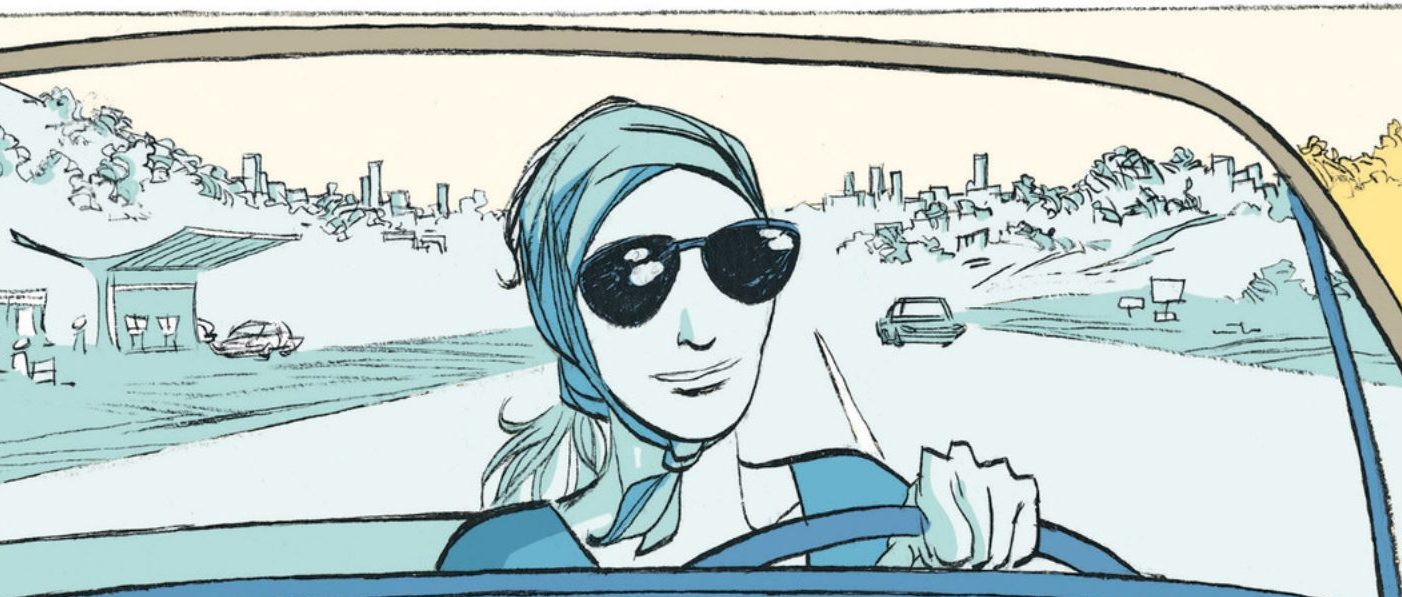Fragments of Femininity
Olivier Pont (writer and artist)
Europe Comics
18 January, 2017
IZNEO HAS PROVIDED WWAC WITH A VIP ACCESS PASS.
What makes a woman feminine? Olivier Pont’s graphic novel, Fragments of Femininity, translated from his 2015 French graphic novel, DesSeins, aims to study the symbol of women’s femininity—their breasts—through the stories of seven women from all walks of life.

The stories are varied. There is Chloe, a college student, tormented by her peers for her flat chest. Mathilde, a woman escaping her cloistered life with a controlling husband. Alison, an actor trying to make a name for herself but constantly being hampered by the industry’s interest in her body. Sylvia, an unhappily married woman who finds herself no longer desirable to her husband, and is now bent on revenge. Faith, who offers to model for students in exchange for taking a few samples of the drawings of her. Elikya, who escapes her impending marriage by running away, to then be rescued by a boy from a village suffering from drought. And, finally, Fleur, the owner of a lingerie store who gives the women who visit her store confidence.
Among the seven stories in this book, the best one, in my opinion, was that of the lingerie store owner. Not only did the story include positive female relationships, but it also had some interesting things to say about the importance of good innerwear. Plus, there is more plot in Fleur’s story. Alongside her meetings with her clients, there are corporates gunning for her space, eventually leading to her lingerie store being burnt down. A bit of corporate espionage is always thrilling in a story.
The other story that was well-written was Faith’s. Though most readers would have cottoned on to why Faith was interested in nude modelling when she clearly specifies in the beginning that she had never done it before, the story still managed to make the impact of her revelation heart-breaking.
Slice-of-life stories are often more intimate and emotional, as they are in this book. We get to know the deepest thoughts of these characters, even though we know very little about them. The portrayals we read here are true to life and a few readers may see similarities with their own lives reflected on the pages. Though one does not expect an exhaustive study of women’s lives in a 118-page graphic novel, the depictions in this book are limited.
For instance, there is no exploration of transgender women, which would have added a much-needed dimension to the understanding of femininity. Instead, the author chooses to explore the clichéd and incredibly male-centric idea of what constitutes femininity: female breasts.
The cliché becomes more obvious in the art. Almost all the bodies we see are similarly shaped. Only one protagonist is fat, but her confidence in her body is dependent on how her husband feels about her—not a very flattering way of depicting a fat character. There is also a surprising lack of racial diversity. Chloe, the protagonist of the first story, appears to be a woman of colour, but aside from Elikya’s story, which embodies every possible African stereotype, the stories all seem Eurocentric. All the other protagonists appear to be white with a smattering of people of colour in the background.
It would have been great to see the art reflect the different eras and emotions of the women, but the same dull brown palette and drawing style is used throughout. It gives the characters a kind of homogeneity that does them and womankind a huge disservice. There are also numerous panels that veer too close to titillation and voyeurism, even if not intentionally, and can be uncomfortable to read.
This discomfort is exacerbated by the fact that the English title does not clue readers in to the subject matter. Fragments of Femininity is not a literal translation of the original French title, DesSeins, which translates to ‘designs’ or ‘by design’. DesSeins also appears to be a play on words by the author; if written as ‘Des Seins,’ meaning ‘of the breasts,’ the book’s obvious focus on breasts becomes clear. Even if the author’s attempts at clever word play worked for French readers, the English translation of the title left much to be desired. Femininity is a broader term than is implied here. By titling the book Fragments of Femininity, the publishers border on deception by promising a greater insight into women’s bodies than is actually attempted in the narrative.
When I started reading the book, I was unaware that it was written and drawn by a man, so I was surprised by the narrow view of femininity. When I saw who the author was, it made sense, but I was still disappointed. Men have been writing female characters for centuries and most have managed to give a more nuanced look into the specific issues that women deal with. But despite the book’s central conceit, it does not respect the female target audience.
By placing female breasts as the ultimate symbol and defining factor of femininity, the author fails to understand the many complicated relationships women have with their bodies. He also does not address the societal pressures on women, especially in regard to their physical appearance. In that sense, this book is a very superficial look at femininity.
If you are looking for an in-depth look at women and the societal constructs that pressure them to look and feel a certain way, this book is not for you. Fragments of Femininity is, instead, a very casual study of women’s bodies when viewed through the male gaze. After reading this book, one is left to wonder how these stories would have been treated had a woman written them instead.


